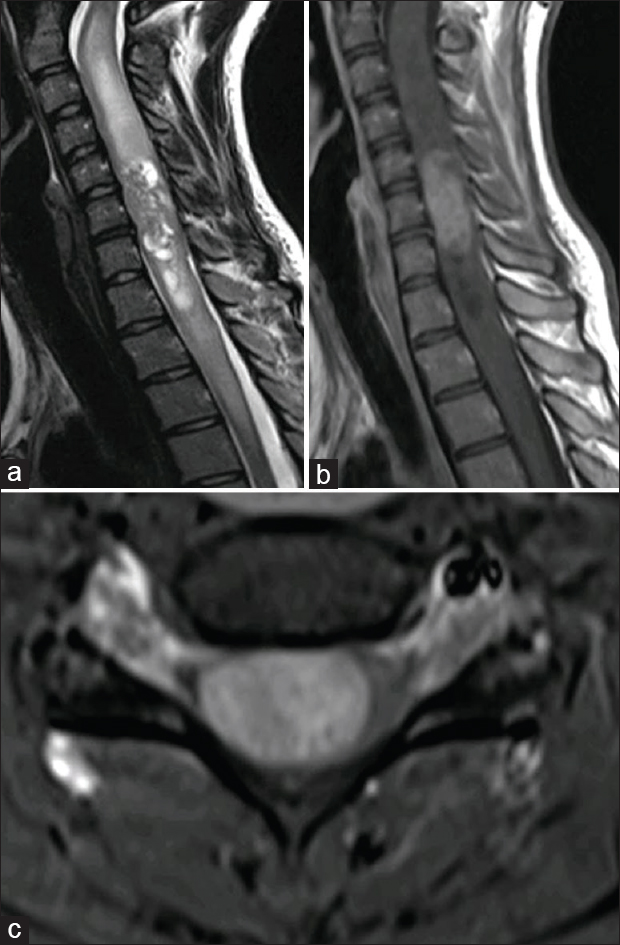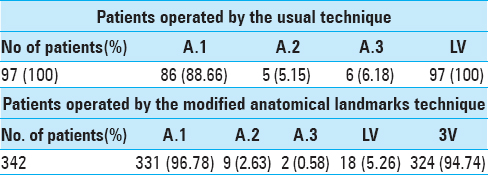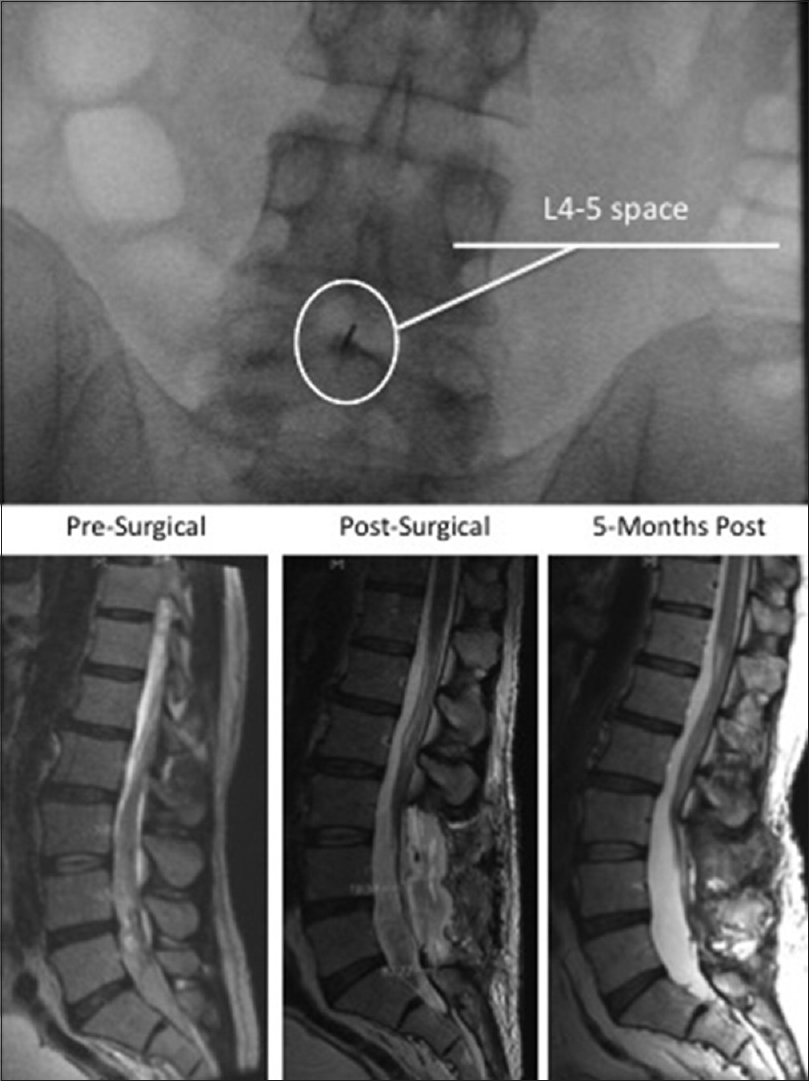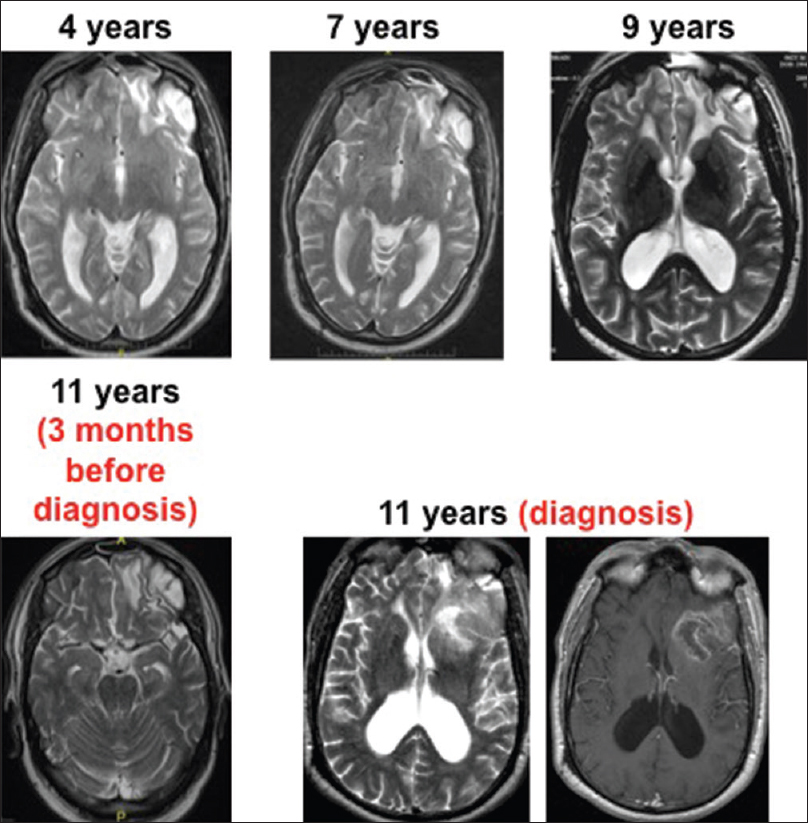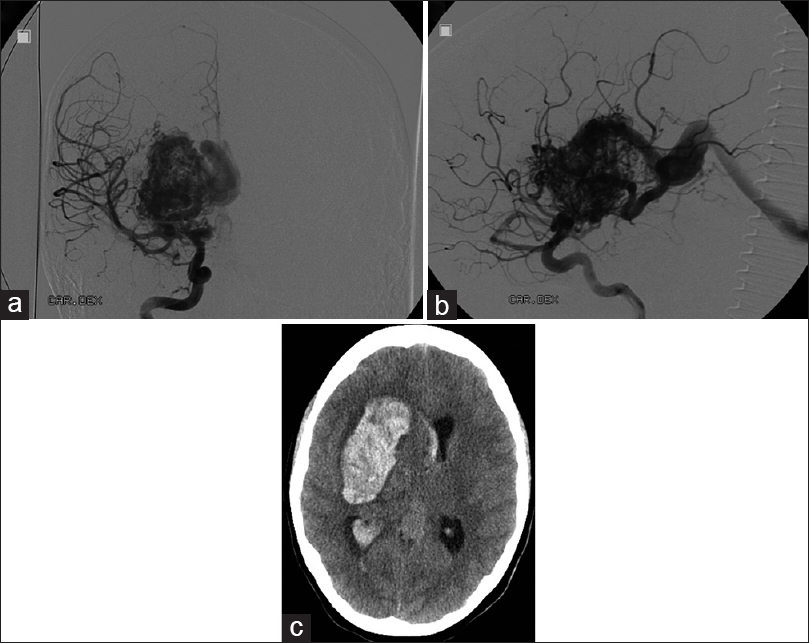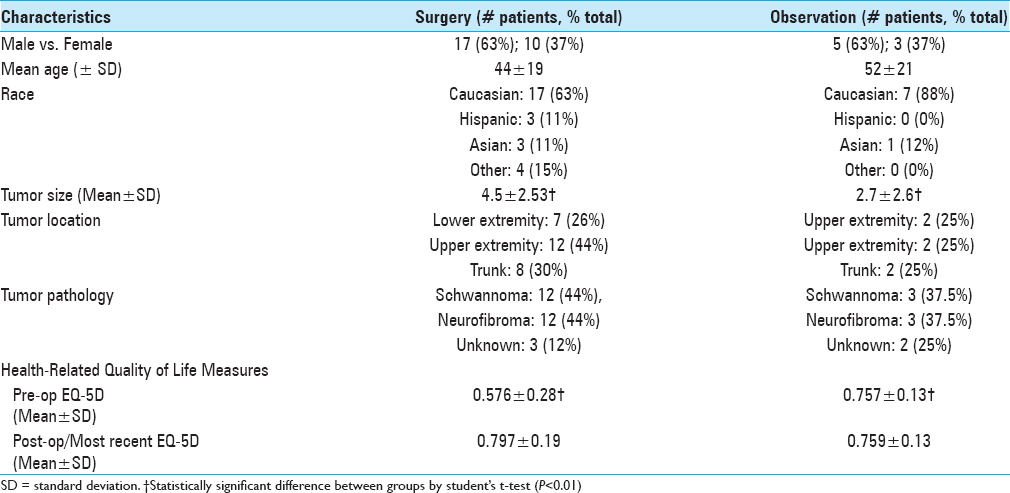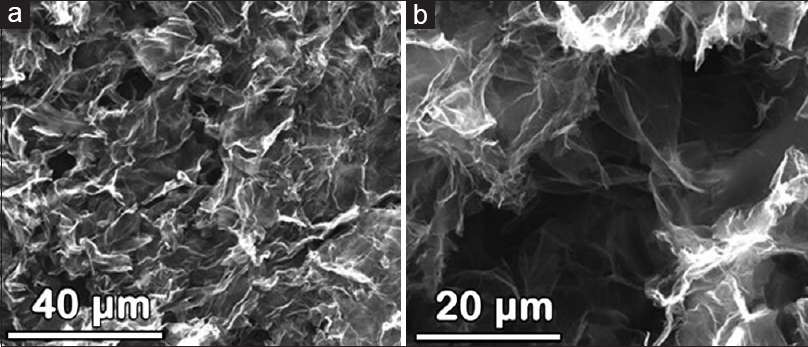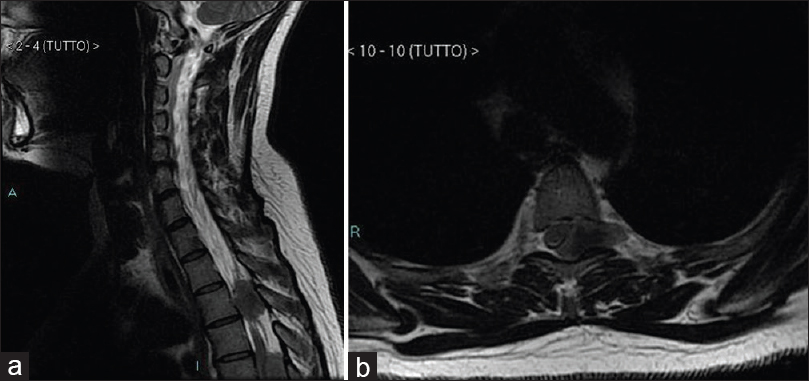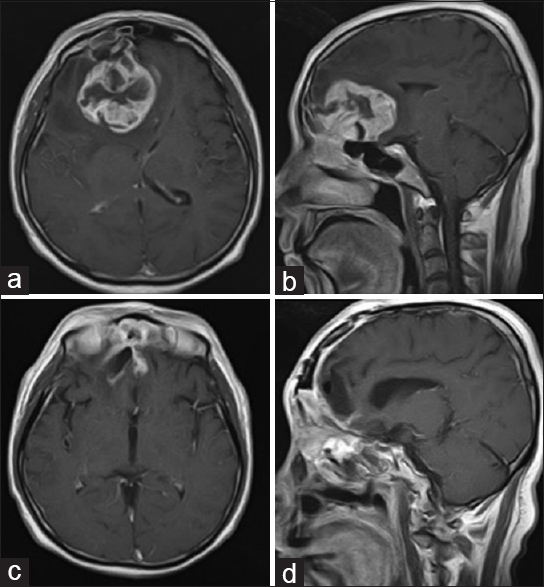Management and outcomes of intramedullary spinal cord tumors: A single center experience from a developing country
Date of publication: 01-Sep-2016
Background:Intraoperative neurophysiology, high magnification microscopes, and ultrasonic aspirators are considered essential aid for the safe resection of intramedullary spinal cord tumors (IMSCTs). Most centers in developing countries such as Pakistan still lack these facilities. The purpose of this study was to review the management of IMSCTs at our hospital and to determine factors associated with the outcomes of surgery.
Surface anatomy for implantation of external ventricular drainage: Some surgical remarks
Date of publication: 29-Aug-2016
Background:External ventricular drainage (EVD) is an emergency process intended to reduce intracranial hypertension resulting from the obstruction of cerebrospinal fluid (CSF) flow. This creates a temporary situation to extract CSF that cannot pass through normally. Knowing the surface anatomy for EVD implantation is important to prevent its inadvertent complications. The external landmarks have been designed in this anatomic study to review the classical landmarks and come up with new landmarks to improve this simple but lifesaving procedure.
Iatrogenic spinal hematoma as a complication of lumbar puncture: What is the risk and best management plan?
Date of publication: 29-Aug-2016
Background:Lumbar puncture (LP) rarely results in complications such as spinal hematomas. However, it remains unclear if certain variables increase likelihood of these events, or if surgical intervention improves outcome.
Traumatic brain injury and subsequent glioblastoma development: Review of the literature and case reports
Date of publication: 26-Aug-2016
Background:Previous reports have proposed an association between traumatic brain injury (TBI) and subsequent glioblastoma (GBM) formation.
Total temporary occlusion of blood flow for several hours to treat a giant deep arteriovenous malformation: A series of multiple operations to save a young life
Date of publication: 26-Aug-2016
Background:The treatment of giant deep arteriovenous malformations (AVMs) remains challenging.
Developing an algorithm for cost-effective, clinically judicious management of peripheral nerve tumors
Date of publication: 26-Aug-2016
Abstract
Peripheral nerve tumors such as neurofibromas and schwannomas have become increasingly identified secondary to improved imaging modalities including magnetic resonance neurogram and ultrasound. Given that a majority of these peripheral nerve tumors are benign lesions, it becomes important to determine appropriate management of such asymptomatic masses. We propose a normal cost-effective management paradigm for asymptomatic peripheral nerve neurofibromas and schwannomas that has been paired with economic analyses. Specifically, our management paradigm identifies patients who would benefit from surgery for asymptomatic peripheral nerve tumors, while providing cost-effective recommendations regarding clinical exams and serial imaging for such patients.
Commentary: Metabolic syndrome and the hepatorenal reflex
Date of publication: 26-Aug-2016
Biocompatibility of reduced graphene oxide nanoscaffolds following acute spinal cord injury in rats
Date of publication: 23-Aug-2016
Background:Graphene has unique electrical, physical, and chemical properties that may have great potential as a bioscaffold for neuronal regeneration after spinal cord injury. These nanoscaffolds have previously been shown to be biocompatible in vitro; in the present study, we wished to evaluate its biocompatibility in an in vivo spinal cord injury model.
Dorsal extradural meningioma: Case report and literature review
Date of publication: 23-Aug-2016
Background:Extradural spinal mass lesions are most commonly metastatic tumors. Extradural meningiomas are rare, accounting for approximately 2.5–3.5% of spinal meningiomas; intraoperatively, they are easily mistaken for malignant tumors, especially in the en plaque variety, resulting in inadequate surgical treatment.
Olfactory neuroblastoma followed by emergency surgery for symptomatic intradural spinal metastasis: A case report
Date of publication: 23-Aug-2016
Background:Olfactory neuroblastoma (ONB) is a rare, aggressive tumor of the nasal cavity. It may invade the paranasal cavities and anterior skull base locally but may also metastasize to the cervical lymph nodes, lungs, or distant central nervous system.


